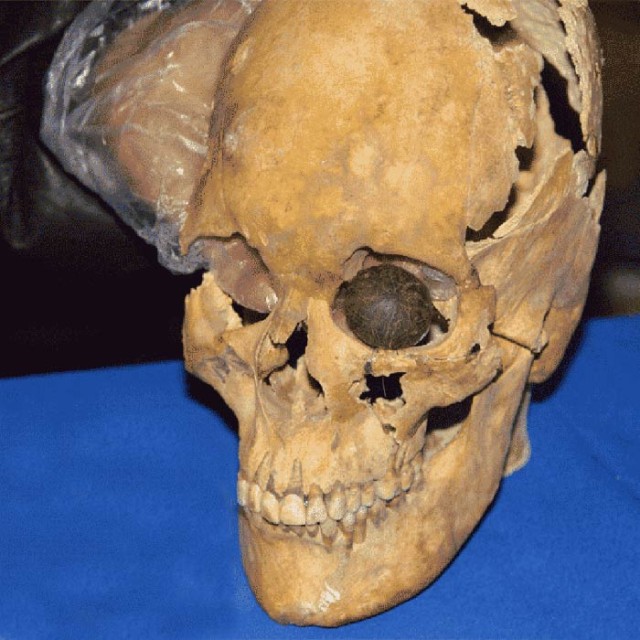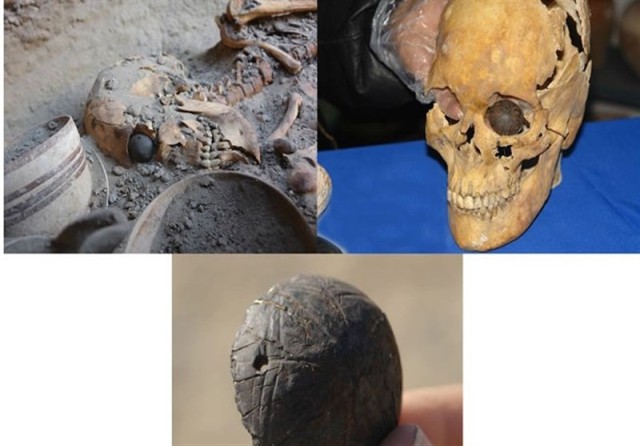
| SURGERY IN PERSIA AND BHARAT Surgery was done in ancient Persia (Iran) and Bharat (India). In Shahr-i Sokhta there is evidence of surgery and I cannot stop myself from mentioning this fact that surgery was also done in Bharat.
In Shahr-i Sokhta a skull of a 12 - 13 years old girl which 4800 years earlier had brain surgery was found.
Sushrut Samhita is 600 B.C. years (2620 years) old and Charak Samhita is 400 - 200 B.C. years old (2420 - 2220 years).
Surgery in Iran :
In Shahr-i Sokhta (Sistan, Iran), meaning ‘Burnt City’ the settlement appeared around 3200 BCE. The city had four stages of civilization and was burnt down three times before being abandoned in 1800 BCE.
The site was discovered and investigated by Aurel Stein in the early 1900s.
The world's earliest artificial eyeball :
In December 2006, archaeologists discovered the world's earliest artificial eyeball in the city's necropolis. This artificial eyeball was worn by a female resident who was 1.82 m tall, much taller than ordinary women of her time and was between 25-30 years old. The woman had dark, exotic skin. Her Africanoid cranial structure suggests her origins were the Arabian Peninsula.
This eyeball is made of a very light material which is still not fully defined but it appears to be natural tar mixed with a kind of animal fat. The surface is covered by a very thin layer of gold. And the tiniest capillaries in the eye were designed by gold wires less than a half mm. The eyeball's pupil is designed in the centre and a number of parallel lines that form almost a diamond are visible around the pupil.
Experts say that the skeleton dates to between 2900 and 2800 BC when the Burnt City was a bustling, wealthy city.
Brain surgery in Shahr-e-Sookhte :
One of the most amazing discoveries is finding the signs of the oldest brain surgery. The skull of a 12-13 years old girl which 4800 years earlier had brain surgery was found. A part of her skull was taken to cure her disease. This girl lived actually quite a long life after the surgery.
Other objects found at the site include a human skull which indicates the practice of brain surgery.
Surgery in Bharat :
The first example of surgery we can find in Rig Ved.
Rig Ved Hymn 1287 Translation of Rig Ved Hymn 1287 :
As a wing of bird falls same way Vishpala lady who was related to King Khel her leg was cut in war. During night time you two (here it says about Ashwini kumars) attached a Iron thigh so that after war starts she can attack.
This shows that Surgery did exist in Ancient times.
To know more about women warriors in Veds Click here.
Charak Samhita :
Charak Samhita is about medicine, practice and theory of surgery by Charak.
The pre-2nd century CE text consists of eight books and one hundred and twenty chapters. It describes ancient theories on human body, etiology, symptomology and therapeutics for a wide range of diseases. The Charaka Samhita also includes sections on the importance of diet, hygiene, prevention, medical education, the teamwork of a physician, nurse and patient necessary for recovery to health.
Sushrut Samhita :
The Sushrut Samhita presents the field of Ayurvedic surgery (shalya) by Sushrut.
This branch of medicine arose in part from the exigencies of dealing with the effects of war. This work also is said to be a redaction of oral material passed down verbally from generation to generation. It is thought to have arisen about the same time period as the Charak Samhita, slightly after or before it according to different authorities. Its style is both prose and poetry with poetry being the greater portion.
The Sushrut Samhita, while dealing with the practice and theory of surgery, is an important source of Ayurvedic aphorisms. For example, the most comprehensive and frequently quoted definition of health is from Sushrut. This work is unique in that it discusses blood in terms of the fourth doshic principle. This work is the first to enumerate and discuss the pitta sub-doshas and the marmas. With its emphasis on pitta, surgery, and blood, this work best represents the transformational value of life. |



